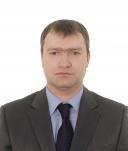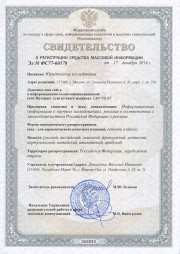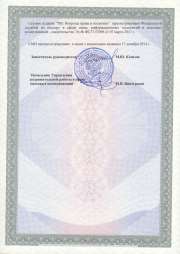|
MAIN PAGE
> Back to contents
Legal Studies
Reference:
Polstovalov O.V., Galiautdinov R.R.
Organized forms of online fraud: types of fraud in the field of computer information and the use of high technologies
// Legal Studies.
2023. № 11.
P. 120-127.
DOI: 10.25136/2409-7136.2023.11.44223 EDN: MXFWZI URL: https://en.nbpublish.com/library_read_article.php?id=44223
Organized forms of online fraud: types of fraud in the field of computer information and the use of high technologies
Polstovalov Oleg Vladimirovich
ORCID: 0000-0003-4991-990X
Doctor of Law
Professor of the Department of Criminology, Institute of Law, Ufa University of Science and Technology
450077, Russia, Republic of Bashkortostan, Ufa, Dostoevsky str., 131

|
kriminalist2010@mail.ru
|
|
 |
|
Galiautdinov Rushan Radikovich
ORCID: 0000-0002-1205-7608
PhD in Law
Associate Professor, Department of Criminology, Institute of Law, Ufa University of Science and Technology
450077, Russia, Republic of Bashkortostan, Ufa, Dostoevsky str., 131

|
rushan-94@mail.ru
|
|
 |
Other publications by this author
|
|
|
DOI: 10.25136/2409-7136.2023.11.44223
EDN: MXFWZI
Received:
05-10-2023
Published:
29-11-2023
Abstract:
Law enforcement and judicial practice in Russia has faced a mass of previously non-existent types of fraud. New types of fraud appeared in the field of computer technology and the use of high technologies. Along with this, the development of economic sectors, the credit and financial system, commercial banks, the emergence of new information, banking technologies, technical means of communication have generated organized forms of online fraud. Primitive forms of fraud are being replaced by more sophisticated ones, new technologies are penetrating into our lives, so forms of fraud using chat gpt, that is, neural networks, have appeared. The above circumstances justify the relevance of the research topic. The subject of the study is various types of fraud in the field of computer information and the use of high technologies and the specifics of their commission. The novelty of the topic of the publication is due to the need for a thorough study of new organized forms of online fraud to prevent the commission of such crimes. For the first time, "modification" as a method of computer fraud, a neural network, as a way of committing fraud, was investigated. An attempt has been made to characterize an organized criminal group committing online fraud. Digital traces of organized forms of online fraud have been investigated. The purpose of this publication is to highlight the features of the commission of organized forms of online fraud. Their allocation will help to effectively solve such crimes. The article uses various methods: general dialectical, logical, analysis of regulatory regulation, formal legal, comparative legal. Conclusions: on the basis of theory and law enforcement practice, the key elements of organized forms of online fraud are identified, the key features of organized criminal groups that commit them are characterized, the role of neural networks in the commission of the crimes under consideration is established.
Keywords:
online fraud, computer fraud, neural network, modification, organized group, digital traces, law enforcement practice, digitalization, computerization, novella
This article is automatically translated.
You can find original text of the article here.
Introduction. Fraud in the field of computer information, according to the letter of the law, is the theft of someone else's property or the acquisition of the right to someone else's property by entering, deleting, blocking, modifying computer information or otherwise interfering with the functioning of storage, processing or transmission of computer information or information and telecommunications networks (Part 1 of Article 159.6 of the Criminal Code of the Russian Federation). In other words, it falls under a pure kind of theft only in the first part of the wording, since the option "or acquisition of the right to someone else's property" is assumed. At the same time, the methods of committing a crime have already been named in the law and characterized in the scientific literature [1, p. 43]. The following scientists studied the problems of online fraud: fraud in the field of computer information and the use of high technologies: Russkevich E.A., Frolov M.D., Shevchenko E.S., Tropina T.L. and others. Organized forms of online fraud: types of fraud in the field of computer information and the use of high technologies and features of their commission. Fraud in the field of computer information and the use of high technologies has recently been gaining momentum [3, p. 22] and rather primitive forms of deception are replaced by the most sophisticated scenarios of misleading victims. If earlier telephone calls for the alleged fact that a close relative of the subscriber got into trouble (became a victim of a traffic accident or went to the police) were focused on the gullible victim and often worked with older and elderly people, now the use of neural network capabilities opens up truly limitless possibilities. From fake news, fraud and extortion for the "sale of compromising" video materials, to video calls with the simulation of an accurate image of the appearance of an allegedly calling close relative – that's just not a complete list of those areas where criminals can fully apply their criminal talent. The neural network as an artificial intelligence tool, which is capable of solving the most complex tasks, is already being used for practical jokes, creating fake news and distributing videos discrediting the honor and dignity of celebrities. Therefore, highly organized fraud will not remain aloof from these additional resources of criminal efforts. It is important to understand that there is no deception and deception traditional for fraud, but attackers still use insufficient computer literacy of users and their excessive confidence in their own information security. And so, the attackers resort to deletion (in Article 272 of the Criminal Code of the Russian Federation, the synonymous term "destruction" is used) computer information in order to achieve its loss by a legitimate user. However, the loss does not always mean that it is impossible to recover the lost data. On the contrary, the blocking of computer information is carried out not in order to influence the qualitative and quantitative characteristics of the computer information itself, but in order to restrict access or prevent a legitimate user from accessing these resources at all. The consequence of blocking computer information is the impossibility of temporary or permanent access to this data, i.e. there is no change in the content of information that remains untouched, but becomes inaccessible [2, p. 66]. Modification as a method of committing computer fraud is a means of complete or partial modification of information. Other interference from the point of view of the implementation of intentions to carry out computer fraud in practice is often understood as unlawful access to computer information, its copying, if such lead to the theft of someone else's property or the acquisition of rights to it. Nevertheless, traditional computer and generally high-tech types of fraud remain in their segment the most popular among dishonest dealers [4, p. 32]. Hacking accounts allows fraudsters to get a database of friends of its owner, who, as a rule, are sent letters asking for help in a difficult life situation. At the same time, scammers do not disdain anything: the serious condition of the child after a traffic accident, a fire where all relatives and property were burned, etc. And the more monstrous the explanations for the need for donations, the easier it is for especially close acquaintances to respond and transfer funds to the account of scammers. Relatives, as a rule, try to call the victim of account hacking in social networks and then the deception is revealed. Often, only ordinary performers from an organized criminal group come to the attention of law enforcement agencies, while the "intellectual center" represented by its leadership often fails to be identified. Maximum anonymity, the use of pseudonyms and nicknames, the "digitalization" of one's participation [5, p. 65] in the implementation of the general scheme of computer fraud create effective protection from criminal prosecution. In particular, the activities of one of these criminal groups have developed quite a standard situation for cases of this kind. Unidentified members of an organized group under the leadership of a participant acting under the pseudonym "Director", possessing special knowledge and skills in the field of computer information, with criminal intentions resorted to the distribution and use of computer programs deliberately designed for unauthorized destruction, blocking, modification, copying and neutralization of computer information protection tools. With the help of these programs, unauthorized access was provided to the local network of a certain "Director" as an object of criminal encroachment of a commercial bank, and, accordingly, to the command server of the banking LAN with personal computers of bank employees and external (peripheral) devices – ATMs. With the help of the same destructive programs, criminals gained access to the management of ATMs, including by sending them illegal commands to issue cash without using payment bank cards. The high organization of the criminal group did not provide for the mandatory personal acquaintance of a number of its participants with each other and the leader, which ensured secrecy and in no way interfered with the effectiveness of criminal activity. At the same time, the relationships of the group members were distinguished by a high level of mutual trust and cohesion. A high degree of coordination of joint efforts, the accuracy of the execution of criminal roles ensured the successful commission of planned crimes and the distribution of stolen funds from their direct recipients in ATMs to the head. The organized criminal group was characterized by stability, expressed in the stability of its composition for a long time[1].
Characteristic of computer fraud, according to some scientists, is that in the course of its implementation and as a result of the application of criminal efforts, there is no particularly urgent need to hide the traces of a crime, since sooner or later the identification of damage becomes obvious. This opinion is shared, for example, by E.A. Russkevich and M.D. Frolov. We cannot agree with these scientists, since it is in organized forms of online fraud that the concealment of traces can be carried out through foreign information servers or GPT services. And according to the author's own law enforcement practice, sometimes traces are hidden in collusion with the employees of the online entity themselves. A conscientious and professional security officer will immediately react and behave in accordance with the job description, while the employee who participates in the implementation of the criminal scheme, even if the damage caused is obvious, will hide what happened. At the same time, the very concealment of traces is initially embedded in the ways of implementing criminal intentions, since the maximum secrecy of the main actors of the criminal group, its organizers, distancing them from ordinary performers and the absence of personal and even more intimate contacts create the necessary conditions for their protection from criminal prosecution. Often, the difficulty in proving the involvement of specific organizers in a crime arises due to the existing tacit, but no less imperative, "corporate solidarity", which is built on the fact that the perpetrator, accomplice, and much less often the instigator, not without reason, counts on legal assistance and corrupt connections of his patron, the organizer of a criminal group. Such corporate solidarity is inherent in the majority of criminal groups of fraudsters, since often this hope for support "from the outside" turns out to be a stronger motive than the preferences provided by law, when, for example, a pre-trial cooperation agreement looks like a much less convincing incentive to assist the investigation and inquiry bodies in solving the tasks of exposing all those guilty of what they have done. In addition, loyalty to the corporate interests of a criminal group is often stimulated by the opportunity to participate in the distribution of criminal profits after release from prison. Often, ordinary members of a fraudulent criminal group who have fallen into the sphere of criminal prosecution simply cannot leave the vicious circle, since they will simply have nowhere to return to when they are released. This is especially true for national-ethnic criminal groups of fraudsters. Conclusion. And so, in the sphere of implementation of highly organized criminal technologies of computer fraud, the following features are distinguished: 1) thorough preparation in the form of an analysis of the protection system of a bank or other business entity, the development of a plan for the implementation of criminal intentions and concealment of the fact of participation of specific persons in it, the search and debugging of appropriate equipment and software, the involvement of accomplices and the distribution of roles between them, the degree and forms of participation of each, a clear algorithmization of joint actions to achieve a criminal result, working out the division of the received criminal profit and different levels of laundering of criminal income; 2) the use of a high level of special knowledge when using computer equipment and software for criminal purposes; 3) maximum distance from personal contacts of members of the criminal group; 4) legendizing the legality of the criminal income received and money laundering obtained in this kind of criminal way; 5) the speed and high efficiency of the actions taken by fraudsters aimed at achieving a criminal result. [1] The verdict of the Yakutsk City Court of the Republic of Sakha (Yakutia) dated August 26, 2019 in criminal case No. 1-1462/2018 on charges of Bulakhov D.D. and Bulakhov I.D. of committing crimes under Part 3 of Article 272, Part 2 of Article 273 and Part 4 of Article 159.6 of the Criminal Code of the Russian Federation.
References
1. Drapkin, L.Y. (Ed.). (2012). Criminalistics. Moscow: Yurayt.
2. Russkevich, E.A., Frolov, M.D. (2020). Fraud in the field of computer information: monograph. Moscow: SIC INFRA-M.
3. Shevchenko, E.S. (2015). Tactics of individual investigative actions in the investigation of cybercrimes, Law and Law (pp. 128-138). Moscow: Law.
4. Tropina, T. L. (2006). Computer fraud: issues of qualification and legislative technique. Moscow: SIC.
5. Babkin, A.V. (Ed.). (2020). Digitalization of economic systems: theory and practice: monograph. St. Petersburg: POLYTECH-PRESS.
First Peer Review
Peer reviewers' evaluations remain confidential and are not disclosed to the public. Only external reviews, authorized for publication by the article's author(s), are made public. Typically, these final reviews are conducted after the manuscript's revision. Adhering to our double-blind review policy, the reviewer's identity is kept confidential.
The list of publisher reviewers can be found here.
The subject of the research in the article submitted for review, as its name implies, should have been organized forms (i.e. external manifestations, types) of online fraud. The introductory part of the work is devoted to the enumeration of these forms. In the main part of the article, the author actually identified the features of this type of crime, which are eventually listed in the final part of the article. Thus, the name of the work does not correspond to its actual content and must be clarified. The methodology of the research is not disclosed in the text of the article, but it is obvious that the scientists used universal dialectical, logical, formal-legal, hermeneutic research methods. The relevance of the research topic chosen by the author is not justified in the introductory part of the work, although the following provision is contained at the beginning of the main part of the article: "Fraud in the field of computer information and the use of high technologies has recently been gaining momentum [3, p. 22] and rather primitive forms of deception are replaced by the most sophisticated scenarios of misleading victims". The scientist also needs to list the names of the leading experts involved in the research of the problems raised in the article, and reveal the degree of their study. It is not explicitly stated what the scientific novelty of the work is. In fact, it is reflected in some of the author's conclusions: "... in the field of implementation of highly organized criminal technologies of computer fraud, the following features are highlighted: 1) thorough preparation in the form of an analysis of the protection system of a bank or other business entity, the development of a plan for the implementation of criminal intentions and concealment of the fact of participation of specific persons in it, the search and debugging of appropriate equipment and software, the involvement of accomplices and the distribution of roles between them, the degree and forms of participation of each, a clear algorithmization of joint actions to achieve a criminal result, working out the division of the criminal profit received and the laundering of criminal income at various levels; 2) the use of a high level of special knowledge when using computer equipment and software for criminal purposes; 3) maximum distancing from personal contacts of participants in a criminal group; 4) legendizing the legality of the criminal income received and money laundering obtained in this kind of criminal way; 5) the speed and high efficiency of the actions taken by fraudsters aimed at achieving a criminal result." Thus, the article makes a definite contribution to the development of domestic legal science and deserves the attention of the readership. The scientific style of the research is fully sustained by the author. The structure of the work is not entirely logical. The introductory part of the study is practically absent. In the main part of the article, the author, based on the analysis of some theoretical sources and materials of judicial practice, identifies a number of features of fraud in the field of computer information and the use of high technologies. The final part of the article contains conclusions based on the results of the study. The content of the article, as already noted, does not correspond to its title. The bibliography of the study is presented by 5 sources (monographs, a scientific article and a textbook). From a formal point of view, this is enough. In fact, the author needs to bring the name of the work and its content into line. There is no appeal to opponents, which is unacceptable for a scientific article. The author refers to a number of sources solely to confirm his judgments or to illustrate certain provisions of the work. He does not enter into a scientific discussion. Conclusions based on the results of the study are available ("And so, in the field of implementation of highly organized criminal technologies of computer fraud, the following features are highlighted: 1) thorough preparation in the form of an analysis of the protection system of a bank or other business entity, the development of a plan for the implementation of criminal intentions and concealment of the fact of participation of specific persons in it, the search and debugging of appropriate equipment and software, the involvement of accomplices and the distribution of roles between them, the degree and forms of participation of each, a clear algorithmization of joint actions to achieve a criminal result, working out the division of the criminal profit received and the laundering of criminal income at various levels; 2) the use of a high level of special knowledge when using computer equipment and software for criminal purposes; 3) maximum distance from personal contacts of participants in a criminal group; 4) legendizing the legality of the criminal income received and money laundering obtained in this kind of criminal way; 5) the speed and high efficiency of the actions taken by fraudsters aimed at achieving a criminal result") are reliable and justified, and certainly deserve the attention of potential readers. The article needs additional proofreading. There are typos in it. The interest of the readership in the article submitted for review can be shown primarily by specialists in the field of criminal law and criminology, provided that it is finalized: clarifying the name of the work and its structure, disclosing the methodology of the study, substantiating the relevance of its topic, introducing elements of discussion, eliminating violations in the design of the article.
Second Peer Review
Peer reviewers' evaluations remain confidential and are not disclosed to the public. Only external reviews, authorized for publication by the article's author(s), are made public. Typically, these final reviews are conducted after the manuscript's revision. Adhering to our double-blind review policy, the reviewer's identity is kept confidential.
The list of publisher reviewers can be found here.
A scientific article entitled "Organized forms of online fraud: types of fraud in the field of computer information and the use of high technologies and features of their commission" is submitted for review for publication in the journal "Legal Research". The text of the article, the subject matter, and the structure of the document correspond to the cipher of the scientific specialty 5.1.4 "Criminal Law Sciences" in terms of scientific research on the passport item 3: Theory of criminal law: criminal law regulation; crime, criminal liability; application of criminal law; social conditionality and effectiveness of criminal law, patterns and trends of its development and improvement" as well as the requirements of a scientific journal in terms of relevance, novelty, and the ability to arouse interest among the readership. So, as a subject of research, the author in his article suggests studying high–tech ways of committing online fraud, which refers to the patterns of committing crimes in the online space. The author also supports his conclusions on the subject of research with theoretical research by research scientists on a given topic and practical arguments, which fits into the classical "scheme" of studying this subject. The research methodology is based on a system of general scientific and private scientific methods. The method of logical reasoning was used in the presentation of the material and in the formulation of conclusions; the statistical method was used in the analysis of investigative and judicial practice. The relevance of the reviewed study is beyond doubt, since the development of high technologies, the resourcefulness of criminals in the Internet space, the credulity of citizens and the technical and personnel backlog of law enforcement agencies have been a "fertile ground" for cyber criminals for many years. The author correctly notes the presence of legal and theoretical gaps that aggravate the situation and increase the level of need for their leveling. The scientific novelty of the article consists in a comprehensive study of organized forms of online fraud, their types, methods and features of committing and formulating the author's system of features of the subject of research, as well as circumstances subject to mandatory establishment of the specified type of criminal encroachment. All this in general has important theoretical and practical significance. The writing style of the text is scientific in nature. The structure is represented by an introduction, main content and conclusion, which corresponds to the requirement for scientific articles. The content of the article corresponds to the stated topic and the nature of the issues to be investigated. The work uses the works of scientists and specialists in the field under study. The monographic studies used relate to the modern period of the development of scientific thought. In total, five sources from theoretical studies were used, as well as regulatory legal acts and judicial practice. Therefore, the bibliographic list meets the requirements. The conclusions made by the author of the article deserve attention and approval from the readership among university students, scientists and practitioners of law enforcement agencies. A scientific article may be recommended for publication.
Link to this article
You can simply select and copy link from below text field.
|
|





